Abu Simbel and the Temple to Ramses II
![]()
For anyone wishing to better understand the history and culture of the ancient Egyptians, the village of Abu Simbel beckons. It was here, carved into the cliffs on the banks of the Nile that the great Pharaoh, Ramses II, built temples to himself and Nefertari, his queen and favorite wife. We had come to Aswan to begin our pilgrimage to Abu Simbel.
We determined that pilgrims to Abu Simbel had two choices. They could join a convoy of vehicles carrying other pilgrims, leaving at 3:00 AM to travel the 300 kilometers, arriving at 7:00, visiting the temples and returning to Aswan the same day, or take the public bus, leaving at 8:00AM, a more civilized hour, and stay over one night in the village of Abu Simbel in order to make two visits to the temples, both with fewer other visitors. Of course, we chose the second alternative!
So, taking small day packs, we arrived at the bus station to buy tickets but were informed that the public bus was not running today. What to do? Several other international visitors had arrived to buy tickets and we all decided to find a minibus (van) to take us. A group of drivers gathered and before long, we had seats in one van and the others had been given seats in another van. It seems that they allow no more than two or three foreigners in one vehicle, as it might attract the attention of the 'bad guys'. We appreciated their concern.
The bus headed south, out of town and across the old Aswan dam to the west side of the Nile. At a check point, we were scrutinized carefully and then waved on. The road was a black strip of asphalt running straight through the brown, lifeless Egyptian desert. Occasionally, we shared the road with other vehicles, like this camel carrying truck.

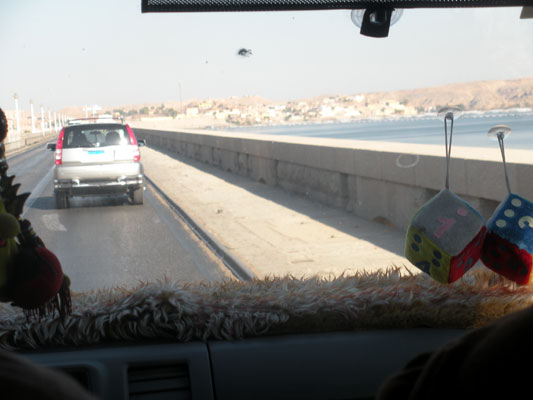
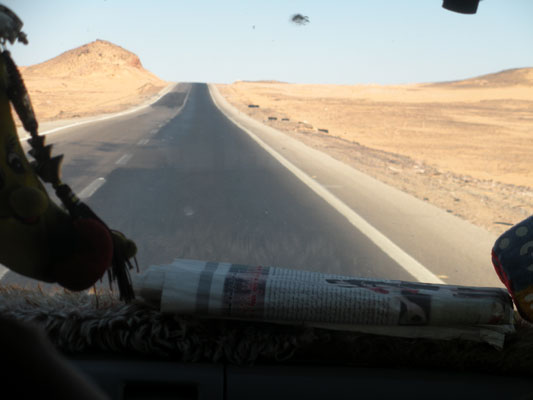
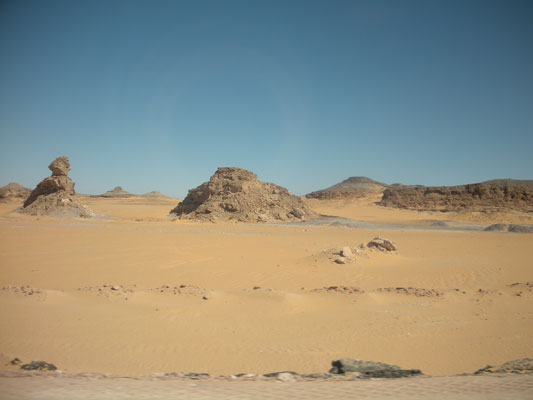


We dozed, observed the landscape, nibbled the food from the boxes we had been given at the hotel. After about three hours, the bus passed the Water Research Center and the airport and pulled into the village centre, where the bus stopped and the other passengers got out. Our driver took us right to the Eskaleh Lodge where we would sleep that night.
We were welcomed by a man in a flowing white galabyya and shown to our room with a king bed and bathroom. Back to the sunny terrace, we sat in the sun and ate the rest of the food we had brought with some soup and drinks from the kitchen. We were both fighting colds and the warm sunshine felt wonderful!
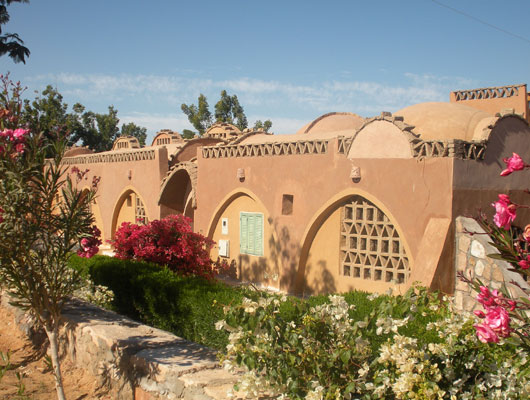

Our host explained the opening hours of the temples and the options for going there. We decided to go to the Sound and Light show in the evening and return very early the next morning.
With a free afternoon to enjoy the lodge and its surrounding gardens, the blue waters of Lake Nasser in the distance, we relaxed more completely than we had since our arrival in Egypt! We read about the amazing feat of modern engineering that occurred in the 1960s when the waters of Lake Nasser, rising behind the newly built Aswan High Dam, lapped at the base of the temples. UNESCO and the global community joined with the Egyptians to move the temples to higher ground, a feat perhaps as stupendous as the original construction of the temples.
In the evening, a man arrived to drive us to the temple where we joined other visitors for the Sound and Light show. As we walked around the mountain to the lake side, the four colossal statues of Ramses II were breathtaking in the evening light. As darkness came, we took seats in a small amphitheatre and put on headphones that delivered the narrative in English. The show began with music followed by the story of Ramses II, his historic battles against the Hittites, Libyans and Nubians, his long rule, his many wives and 100 children, and his relationship with Nefertari, his favorite wife and queen. Then the lights appeared as waves of water to represent the rising of Lake Nasser and the story of the removal of the great temples to higher ground was told.
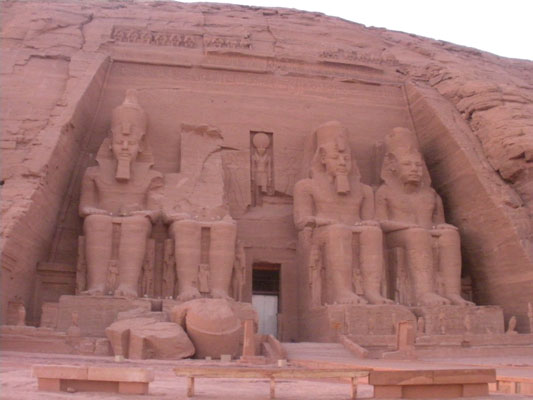
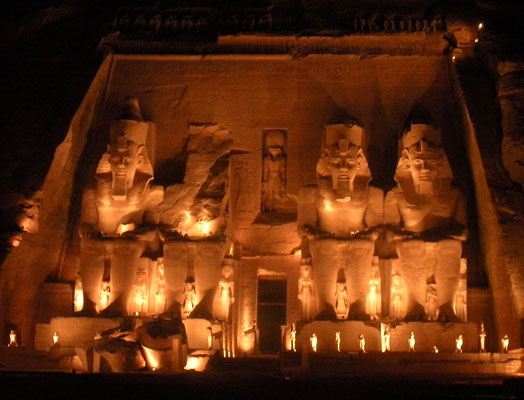


We returned to our lodge for a multicourse dinner of Nubian foods and then retired to our comfy bed to dream of the great deeds of this king of so long ago, whose life and times had now become more familiar to us.
We rose in the dark while stars lighted the sky, to return to the temples. The great facades face toward the east so, as the sun rose over the lake, the faces turned from rosy red to brighter tan
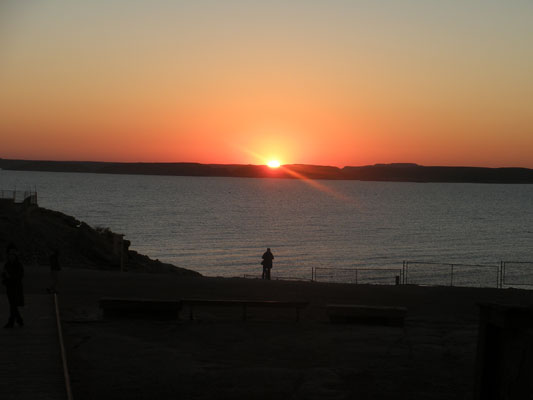
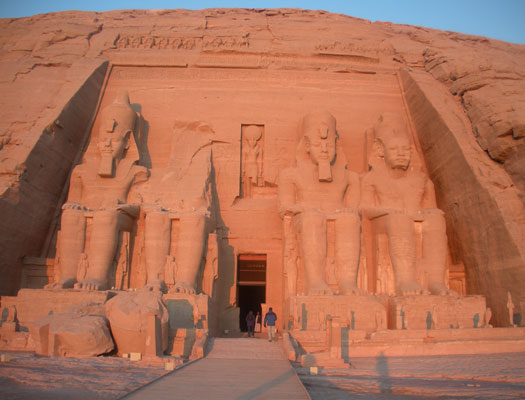
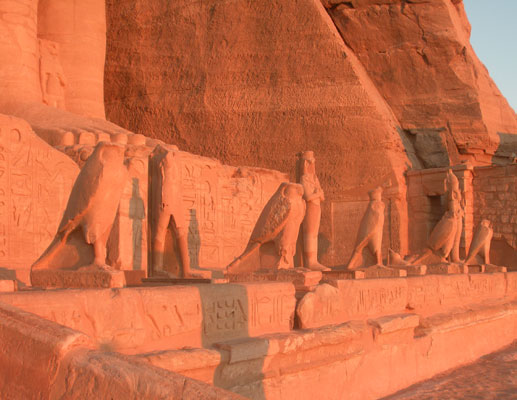

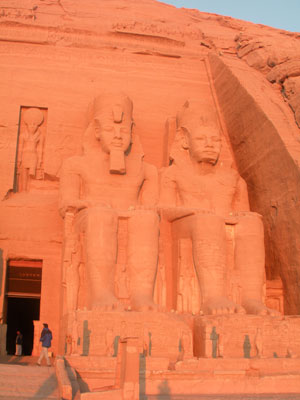
The morning wind was chilly so after enjoying this phenomenal view we entered the interior of Ramses temple for warmth. There we were captivated by the artwork inscribed on all of the surfaces celebrating the deeds and the rise of the great pharaoh to the status of the gods. Deep into the mountain, a chamber was carved where Ramses took his place beside Aman Re, Harmakis And Ptah. We learned that due to it's carefully chosen orientation, this chamber is illuminated by the rising sun only two times a year. Back outside, the sun was fully up and the light shown strong and bright on the facades.
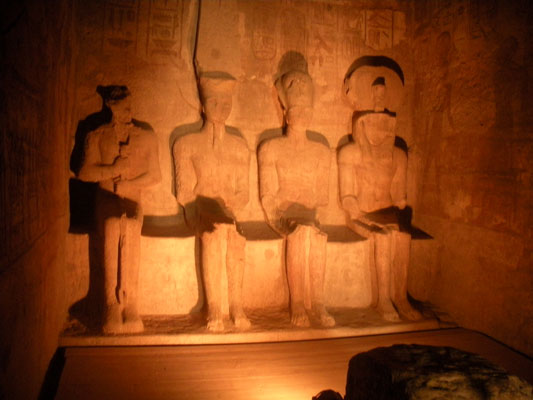
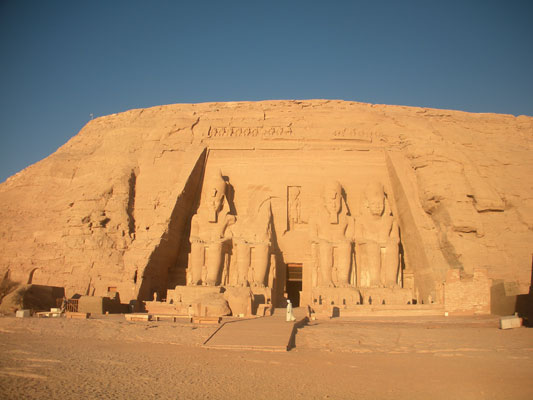
We then walked to admire the facade of Nefertari's temple.

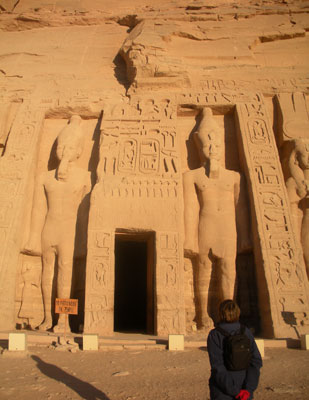
Walking inside, we were the only visitors at that moment. The columns of the temple were inscribed with images of Hathor, the goddess of Love. The queen herself was portrayed as a lithe and graceful woman.
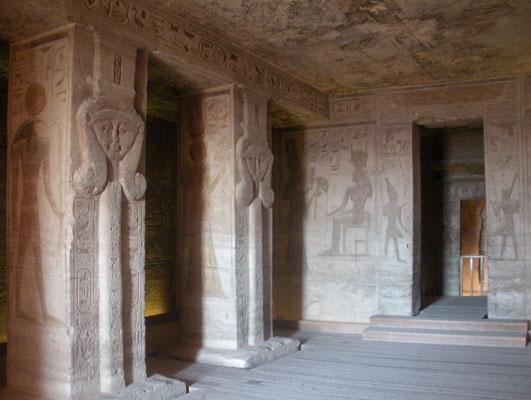
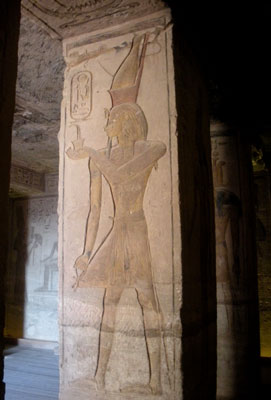
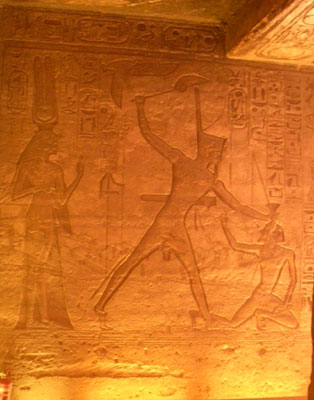
But now the peaceful time was suddenly over! The buses of the convoy had arrived and many more visitors were arriving. We were pleased to see that even in these times of reduced tourism, plenty of visitors still come to this remote and special place. We took one last look and walked home in the sunlight to eat breakfast, served on the sun-warmed terrace.


After check out, we walked to the centre to find a minibus back to Aswan. Our host saw us there and helped us to negotiate for two seats. After the bus was filled, we headed back towards Aswan along the black ribbon road through the brown Egyptian desert, feeling that we had learned more about Egypt in the last 30 hours than in the preceding nine days.
Click here to return to our 'Spring 2012 - Egypt and More Time in the Middle East' page
![]()